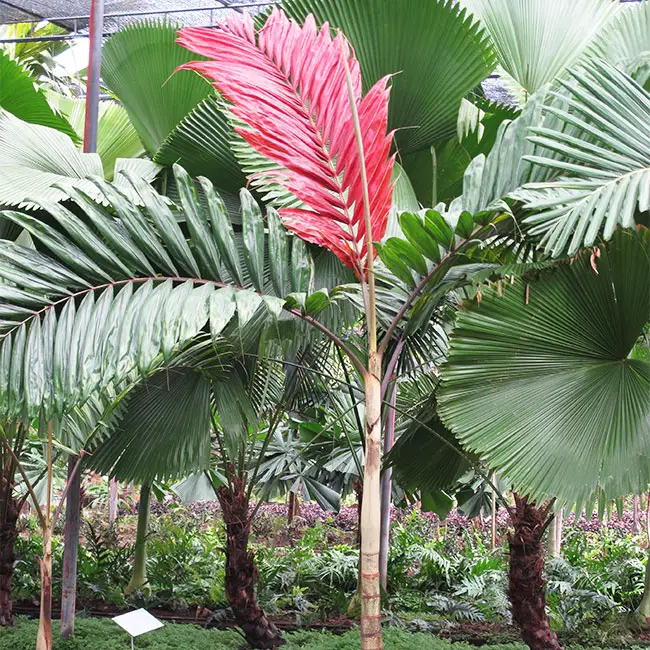
The Flame Thrower Palm Tree, scientifically known as Chambeyronia macrocarpa, is an exotic palm tree distinguished by a vibrant red leaflet that emerges amidst its dark green, feathery fronds.
Due to this striking red leaflet, it is commonly referred to as the Flame Thrower Palm or Blushing Palm. This unique palm tree can thrive when grown indoors, making it a great choice for indoor cultivation.
It is native to New Caledonia, an archipelago located in the southwest Pacific Ocean. This palm species is indigenous to the rainforests and subtropical regions of New Caledonia.
While it is primarily found in its native habitat, it has also been cultivated in various parts of the world with suitable climates for its growth.
Quick Facts:
| Scientific name: | Chambeyronia macrocarpa |
| Common names: | Flame Thrower Palm, Red Feather Palm, Red Leaf Palm, Blushing Palm, Watermelon Palm. |
| Origin: | Native to the island of New Caledonia located east of Australia and north of New Zealand. |
| Growth Rate: | Slow. Up to 10 – 20 ft tall and 15-20 ft wide. |
| Cold Tolerance: | USDA Zones 9a (20 to 25 F) to 11 (above 40 F) |
| Light Req: | Full sun to partial shade. |
| Water Req: | Moderate. |
| Soil Req: | Widely adaptable |
| Fruit: | Yes. Green, red. Not edible. |
| Propagation: | By seed. |
Flame Thrower Palm Appearance
Trunk: The Flame Thrower Palm starts with a solitary trunk that is smooth and slender, typically reaching heights of up to 30 to 40 feet (9 to 12 meters). The trunk is typically a reddish-brown to maroon color, which sets it apart from many other palm species.
This unique trunk coloration is especially vibrant in younger palms and gradually fades as the palm matures.
Leaves (Fronds): The fronds of the Flame Thrower Palm are a true highlight of this species. These pinnate fronds are composed of numerous leaflets that emerge from a central stalk.
What makes them extraordinary is their striking red or bronze color when they first unfurl. As the fronds mature, the color gradually transitions to a rich, glossy green. The contrast between the young red fronds and the mature green fronds creates a captivating visual effect.
Leaflets: The leaflets of the Flame Thrower Palm are arranged in a feather-like pattern along the fronds, creating an elegant and symmetrical appearance. When young, these leaflets are a deep red or coppery color, lending the palm its fiery name.
As they mature, they transform into a glossy green hue, maintaining the overall allure of the palm.
Crown: The Flame Thrower Palm’s crown forms a dense and rounded canopy at the top of the trunk. When the palm is young and its fronds are still red, the crown is particularly eye-catching, resembling a burst of flames, which is the source of its common name.
Flowers and Fruits of the Flame Thrower Palm
The palm’s flowers are typically small and unassuming, commonly greenish in color. While they are not showy, these flowers play a vital role in the palm’s reproduction by attracting pollinators, such as insects.
The flowering period of the Flame Thrower Palm can vary, influenced by factors like climate and environmental conditions.
Following successful pollination, the palm produces small, spherical fruits that are initially green in color. As these fruits mature, they undergo a stunning transformation, turning from green to a brilliant red hue.
This transition adds a visually striking element to the palm’s overall appearance. The red fruits provide a delightful contrast against the palm’s lush green fronds, enhancing its aesthetic appeal.
Inside these fruits, there may be seeds, which can be dispersed by wildlife, aiding in the natural propagation of the Flame Thrower Palm.
How To Care For Flame Thrower Palm
Caring for Flame Thrower Palm involves providing adequate sunlight, well-draining soil, and appropriate watering practices. Keeping an eye out for potential pest issues, minimal pruning, and occasional fertilization will help these palms thrive in your landscape.
Light: Flame Thrower Palms thrive in well-lit conditions, particularly in a spot that receives bright, indirect sunlight. They can adapt to partial shade, but providing them with ample, filtered sunlight is ideal for their robust growth and vibrant fronds.
Soil: The soil in which you plant your Flame Thrower Palm should have excellent drainage properties. These palms prefer sandy or loamy soils that allow water to pass through easily, preventing waterlogged conditions that could harm the roots.
Watering: Outdoor Flame Thrower Palms require consistent and regular watering to maintain soil moisture levels. However, it’s crucial not to overwater, as these palms are sensitive to waterlogged conditions. Allow the top layer of soil to dry out slightly between watering sessions to strike the right balance.
Temperature: These palms thrive in warm and tropical climates, with temperatures ranging between 65°F to 80°F (18°C to 27°C) being ideal. While they can tolerate brief periods of cooler weather, they should be protected from frost to avoid damage to their fronds and overall well-being.
Pruning: Pruning should be minimal and focused primarily on removing dead or yellowing fronds. Excessive pruning can cause stress and hinder their growth.
Fertilization: Flame Thrower Palms benefit from occasional fertilization to ensure they receive essential nutrients for healthy growth. A balanced, slow-release palm fertilizer applied during the growing season, typically in spring and summer, is a common practice.
Pest and Disease Management: While Flame Thrower Palms are generally hardy and disease-resistant, it’s wise to keep an eye out for potential pest issues, such as mealybugs or spider mites. Timely treatment with insecticidal soap or neem oil can address such problems. Ensuring proper drainage is essential to prevent root rot, which can occur if the soil holds too much water.
Transplanting and Repotting: Transplanting outdoor Flame Thrower Palms is generally not necessary, as they thrive in the ground. However, if you need to move or repot them, ensure the new location or container has well-draining soil and offers the right amount of sunlight exposure.
Propagation: Propagating Flame Thrower Palms is primarily achieved through seeds found in their fruits. While this process is slow, it remains the most reliable method for expanding your collection of these captivating palms.
Flame Thrower Palm Pictures
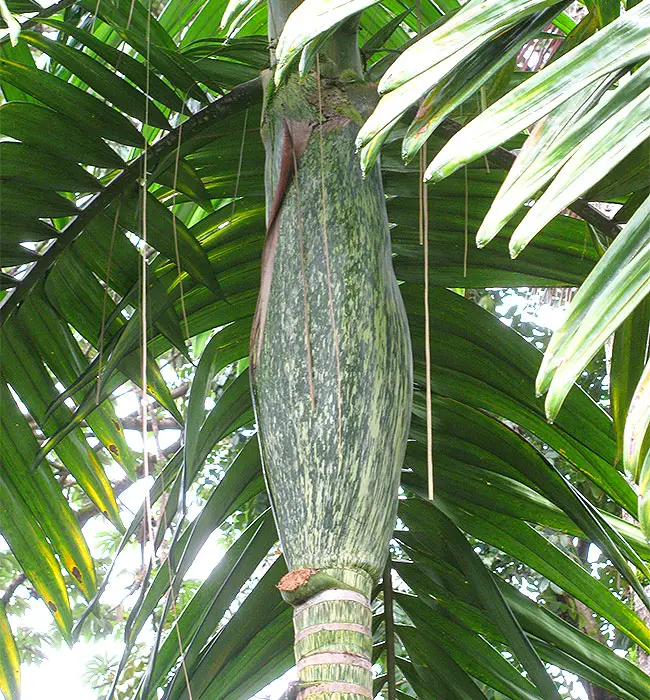
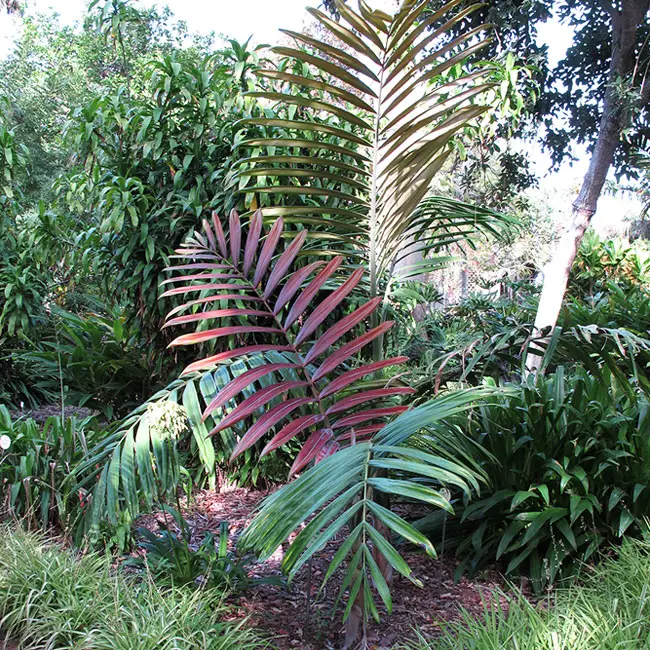
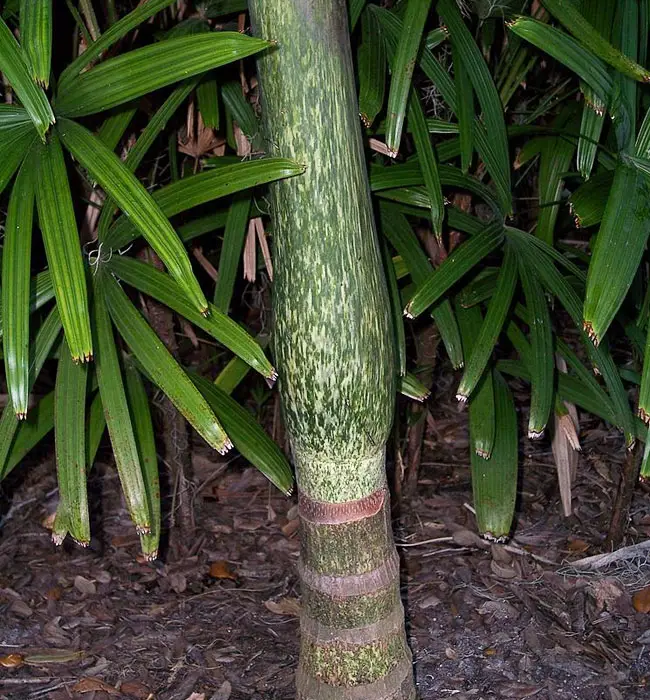
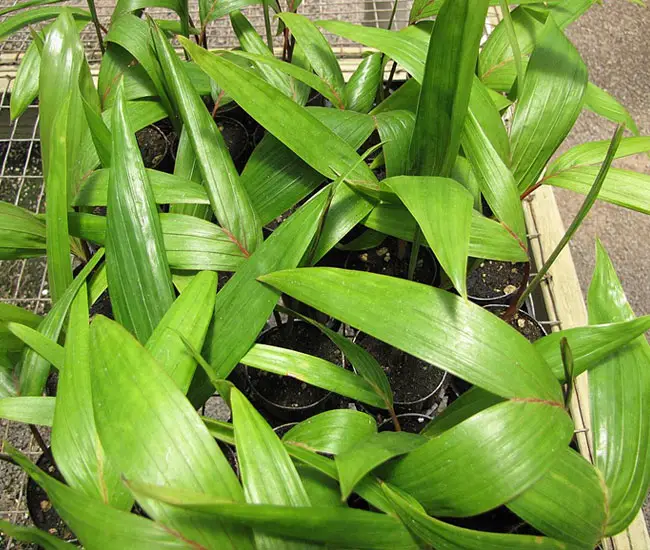
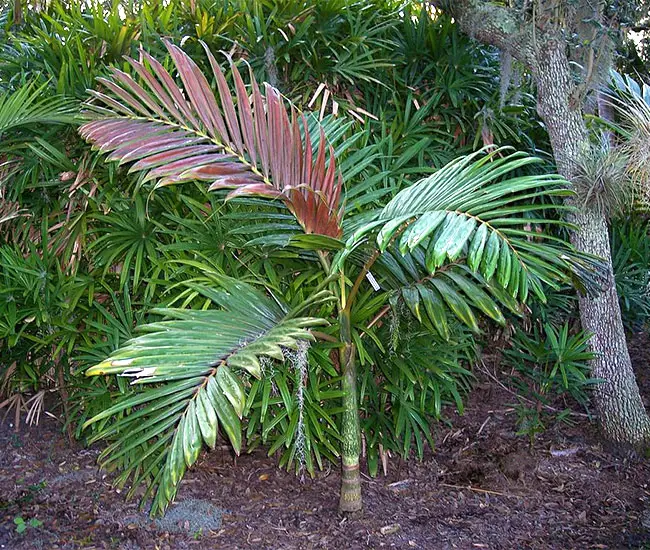
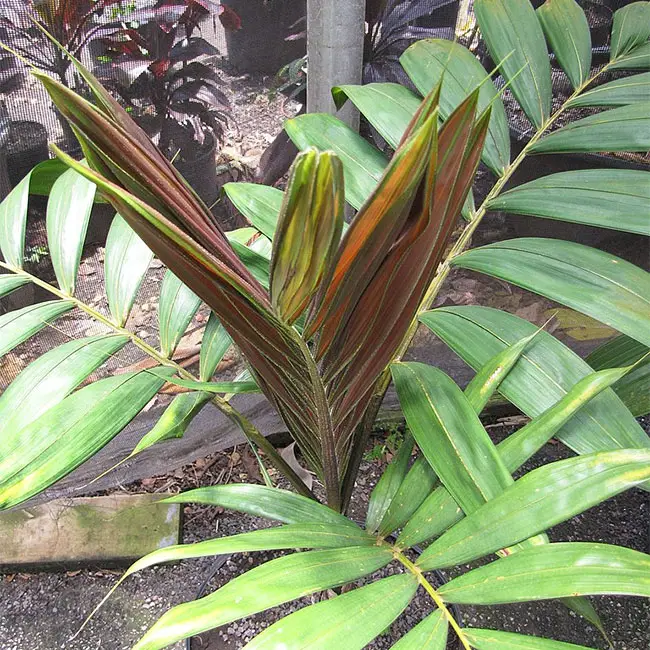
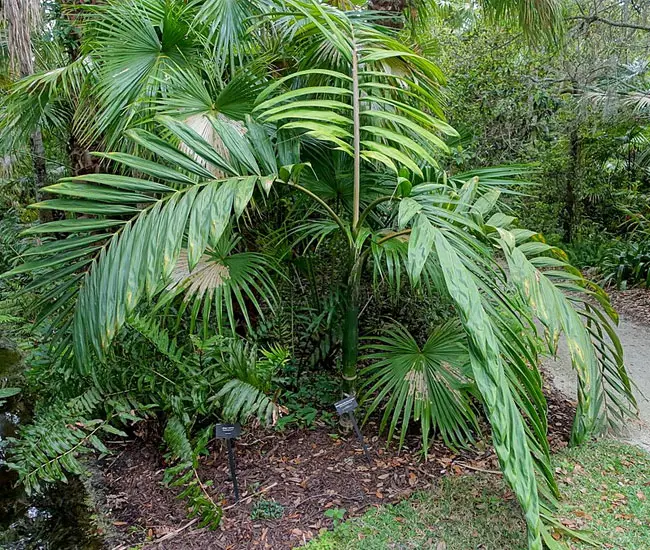
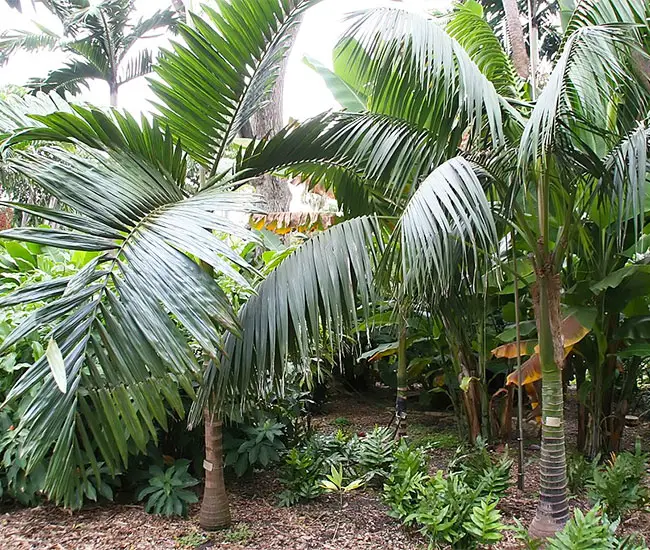
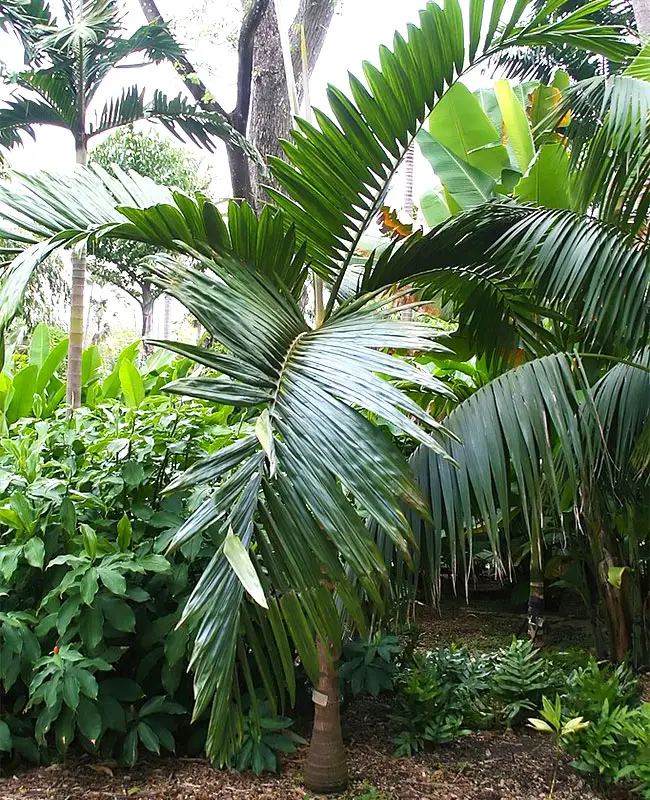
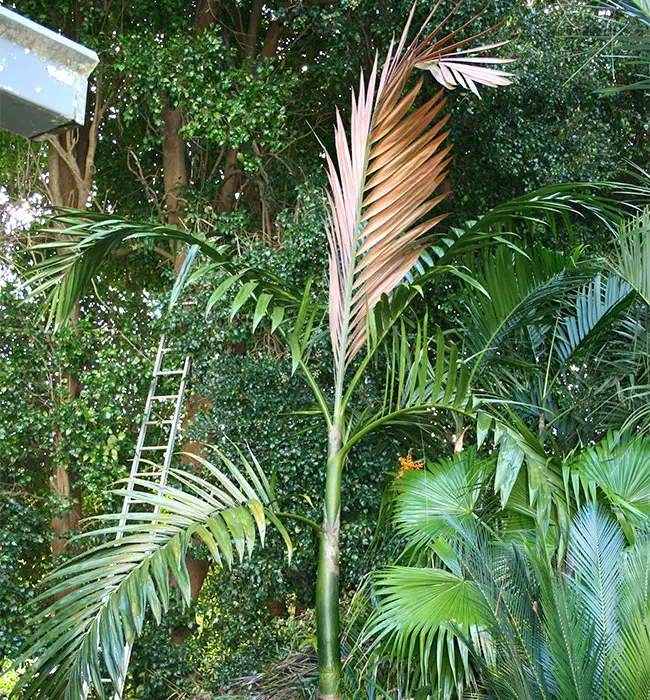
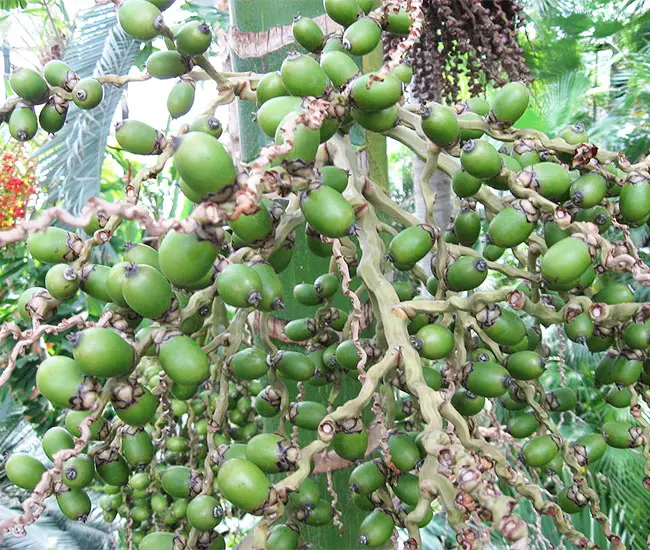
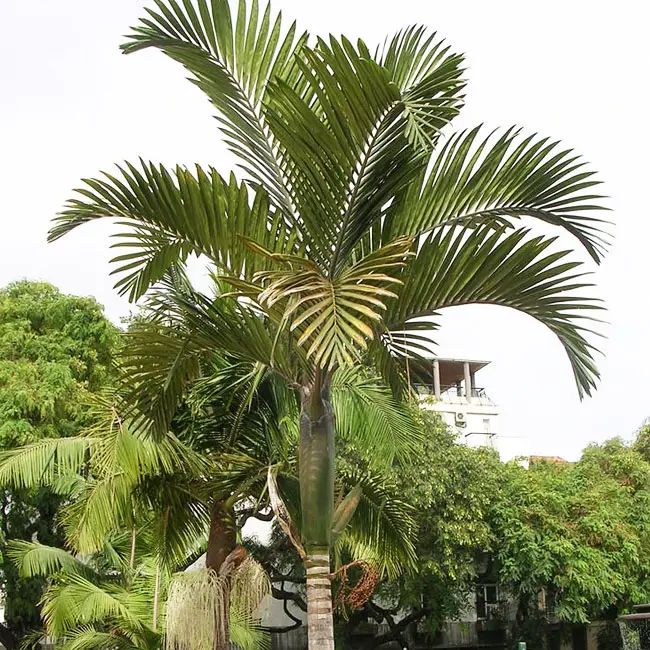

Looking to purchase a watermelon flamethrower palm. Do you have this variety? Please let me know . Thank you.
Wow! What a nice looking palm! First time I ever heard of this palm. I would love to get one but I live in Arizona zone 9b in a rual desest area far from the city. It can get colder out here than in Phoenix. And it does get hot in the summer. And it gets windy here.